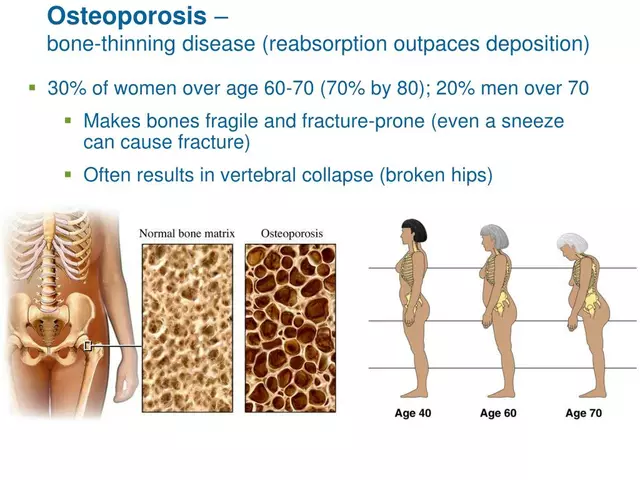Women with PCOS who struggle with weight gain aren’t just dealing with stubborn fat-they’re fighting a deeper metabolic battle. Insulin resistance, high testosterone, irregular periods, and the constant cycle of trying and failing to lose weight can feel overwhelming. For years, metformin was the go-to, offering modest help. But now, a new class of drugs called GLP-1 receptor agonists is changing the game. These aren’t magic pills, but for many women with PCOS and obesity, they’re the most effective tool they’ve ever had.
What Are GLP-1s, Really?
GLP-1s-short for glucagon-like peptide-1 receptor agonists-are medications originally made for type 2 diabetes. But they do something powerful: they talk directly to your brain and gut to reduce hunger, slow digestion, and help your body use sugar better. The first one, exenatide, came out in 2005. Now, we have liraglutide (Saxenda) and semaglutide (Wegovy, Ozempic), which work longer and harder. Semaglutide lasts a full week, so you only need one injection a week. That’s why so many women with PCOS are turning to them-not because they’re trendy, but because they actually work.
These drugs bind to receptors in your brain that control appetite, your pancreas that makes insulin, and your stomach that slows down how fast food moves through you. The result? You feel full sooner, eat less, and your body starts burning fat instead of storing it. And for women with PCOS, that’s huge.
Why PCOS and Weight Go Hand in Hand
Up to 80% of women with PCOS are overweight or obese. That’s not just coincidence-it’s biology. Insulin resistance is the core problem. When your body doesn’t respond well to insulin, your pancreas pumps out more. That extra insulin tells your ovaries to make more testosterone. High testosterone means acne, facial hair, and missed periods. It also makes it harder to lose weight because your body thinks it’s starving, even when you’re eating normally.
Metformin helps insulin resistance, but most women only lose 2-4% of their body weight on it. That’s not enough to reset hormones. Studies show you need to lose at least 5% of your weight to see real improvements: periods return, testosterone drops, and ovulation starts happening again. That’s where GLP-1s step in.
The Numbers Don’t Lie: How Much Weight Do GLP-1s Really Help You Lose?
Let’s look at real data from studies in women with PCOS:
- Liraglutide (1.8-3.0 mg daily) led to 5-10% weight loss over 6-12 months.
- Semaglutide (2.4 mg weekly) caused 5.6% weight loss in just 12 weeks, and up to 14-15% over a year.
- One 2024 trial found women on semaglutide lost 10.2% of their body weight in 36 weeks-compared to just 2.1% in the placebo group.
- Visceral fat (the dangerous kind around your organs) dropped by 18% in women using semaglutide.
Compare that to metformin’s 2-4% weight loss. GLP-1s don’t just nudge the scale-they shift it.
Beyond Weight: Metabolic and Hormonal Improvements
It’s not just about the number on the scale. Women on GLP-1s see real changes in their blood work and cycle regularity:
- Testosterone levels drop by 20-30% on average.
- Insulin sensitivity improves significantly-some women go from prediabetic to normal.
- Lipid profiles improve: triglycerides fall, HDL (good cholesterol) rises.
- 68% of women in one study reported more regular periods after 6 months.
- 42% started ovulating spontaneously, meaning they could get pregnant without fertility drugs.
One woman on Reddit wrote: “After 6 months on semaglutide, I lost 28 lbs. My testosterone dropped from 68 to 42. I had my first regular period in 3 years.” That’s not an outlier-it’s becoming common.

GLP-1s vs. Metformin: The Real Comparison
Metformin is cheap, safe, and has been used for decades. But it’s not enough for most women with PCOS and obesity. Here’s how they stack up:
| Feature | GLP-1 Receptor Agonists | Metformin |
|---|---|---|
| Typical Weight Loss | 5-15% | 2-4% |
| Testosterone Reduction | 20-30% | 10-15% |
| Insulin Sensitivity Improvement | High | Moderate |
| Period Regularity | Significant improvement | Mild improvement |
| Monthly Cost (USD) | $800-$1,400 | $10-$20 |
| Side Effects | Nausea, vomiting, dizziness (common at start) | Diarrhea, bloating, stomach upset |
GLP-1s win on effectiveness-but lose on cost. That’s the trade-off.
Who Benefits Most? Who Should Skip It?
These drugs aren’t for everyone. They work best in women with:
- BMI over 30
- Insulin resistance or prediabetes
- High testosterone levels
- Failed to lose weight with diet, exercise, or metformin
If you have lean PCOS (BMI under 25) and no insulin issues, GLP-1s won’t help much. You might even get side effects for no benefit.
They’re also not safe for people with a personal or family history of medullary thyroid cancer, or those with multiple endocrine neoplasia syndrome. Pregnant women shouldn’t use them, and you should stop them if you’re trying to conceive-though many women get pregnant after stopping, once their hormones reset.
The Catch: Side Effects and Cost
These drugs aren’t easy to start. About 44% of people get nausea, 24% vomit, and 15% feel dizzy-especially in the first few weeks. That’s why doctors start low: 0.25 mg of semaglutide once a week, then slowly increase every 4 weeks. Most people feel better after 8-12 weeks.
Many women on forums like Reddit say they gave up because they couldn’t eat without feeling sick. One wrote: “Spent $1,200 a month on Wegovy. Lost 15 lbs but couldn’t keep food down. Switched back to metformin.”
Cost is another barrier. In the U.S., branded versions cost $800-$1,400 a month. Generic metformin is $15. Insurance rarely covers GLP-1s for PCOS because it’s off-label. Some women in Australia get partial subsidies through the PBS if they meet strict criteria, but most pay out of pocket.

How to Use Them Right
Just taking the shot isn’t enough. The best results come from combining GLP-1s with:
- Protein-rich meals to reduce nausea and keep you full
- Hydration-drink water before and after injections
- Gradual dose increases-don’t rush the titration
- Continuing metformin-studies show women who stayed on metformin after stopping GLP-1s kept 2/3 of their weight loss, while those who stopped both regained 60-70%
Injection sites? Abdomen, thigh, or upper arm. Rotate them. Use a new needle every time. Most pens are easy to use once you get the hang of it.
What’s Next? The Future of PCOS Treatment
The European Medicines Agency accepted Novo Nordisk’s application in June 2024 to approve semaglutide 2.4 mg specifically for PCOS with metabolic issues. A decision is expected in early 2025. If approved, this will be the first official PCOS indication for a GLP-1.
Research is also moving fast. Oral versions like Rybelsus (semaglutide pill) are being tested for PCOS. New drugs like retatrutide (a triple agonist) could offer even better results with fewer side effects. By 2027, experts predict GLP-1s will be standard care for obese PCOS patients.
But access remains a problem. Without insurance coverage, these drugs are out of reach for many. Until then, they’re a powerful tool-for those who can get them.
Final Thoughts: A Game-Changer, But Not a Cure
GLP-1s aren’t a miracle. They don’t fix PCOS. But for women who’ve struggled for years to lose weight and reset their hormones, they offer something rare: real, measurable hope. If you have PCOS, obesity, and insulin resistance, and other treatments haven’t worked, this might be your turning point. Talk to your endocrinologist. Ask about testing your insulin levels. Consider starting low and going slow. And don’t give up if the first few weeks are tough-most women get past the nausea.
This isn’t about chasing a number on the scale. It’s about getting your body back. Regaining your cycle. Reducing your risk of diabetes. Feeling like yourself again.
Do GLP-1s help with PCOS symptoms beyond weight loss?
Yes. Studies show GLP-1s reduce testosterone levels by 20-30%, improve insulin sensitivity, lower triglycerides, and increase HDL cholesterol. Many women report more regular periods and spontaneous ovulation after 6 months of use. These changes happen because weight loss reduces fat tissue’s role in producing excess hormones and insulin resistance.
Can I take GLP-1s if I want to get pregnant?
Doctors recommend stopping GLP-1s at least 2 months before trying to conceive. There’s no evidence they harm a developing fetus, but long-term safety data in pregnancy is limited. Many women conceive naturally after stopping the drug because their hormones have normalized. Always talk to your doctor before stopping or starting any medication when planning pregnancy.
How long do I need to take GLP-1s for PCOS?
GLP-1s are meant for long-term use, just like blood pressure or diabetes meds. Stopping often leads to weight regain-up to 60-70% within a year if you don’t continue lifestyle changes. The best results come from combining them with healthy eating and exercise, then staying on metformin after stopping GLP-1s to maintain the gains.
Are there cheaper alternatives to Wegovy or Saxenda?
Currently, no generics exist for semaglutide or liraglutide. Some women use compounded versions, but these aren’t FDA-approved and carry safety risks. The only affordable alternative is metformin, but it’s less effective for weight loss. In countries like Australia, partial subsidies may be available through the PBS for qualifying patients with severe obesity and diabetes.
What if I can’t afford GLP-1s?
Focus on what you can control: diet, movement, and metformin. Prioritize protein, fiber, and low-glycemic carbs. Strength training improves insulin sensitivity more than cardio alone. Even a 5% weight loss from lifestyle changes can improve your cycle and fertility. Consider working with a dietitian who specializes in PCOS. Progress takes time, but it’s still possible without these drugs.





Jordyn Holland
Oh wow, another ‘GLP-1s are magic’ post. Let me guess-you’re the one who spent $1,200/month on Wegovy and still cried over a slice of pizza? Congrats, you’re now a biohacking influencer. The only thing more expensive than the drug is your delusion that this is sustainable.
Jasper Arboladura
The data presented is methodologically flawed. Most studies on GLP-1s in PCOS populations have small sample sizes, lack long-term follow-up, and conflate weight loss with metabolic improvement. The reduction in testosterone is likely secondary to adiposity loss, not direct pharmacological action. Also, the cost-benefit analysis ignores opportunity cost-funds spent on these drugs could be directed toward lifestyle interventions with higher evidence durability.
Joanne Beriña
USA has the best healthcare system in the world and you’re crying about $800 a month? Get a second job. Or better yet-stop being lazy. My cousin lost 70 lbs on metformin and walking 5K a day. You don’t need fancy drugs, you need discipline. This is why America’s falling apart-people want magic pills instead of hard work.
ABHISHEK NAHARIA
One cannot ignore the structural inequities embedded in pharmaceutical capitalism. The commodification of metabolic health through GLP-1 agonists reflects a neoliberal logic wherein bodily autonomy is outsourced to corporate pharmacology. While the biochemical mechanisms are valid, the social ecology of access renders this ‘breakthrough’ an elitist luxury. The real question is not efficacy, but who gets to heal-and who gets priced out of the cure.
Hardik Malhan
GLP-1RAs show significant efficacy in reducing visceral adiposity and improving HOMA-IR in PCOS cohorts. However, GI side effects are dose-dependent and often lead to non-adherence. The key is titration protocol and concomitant metformin use. Most failures are due to rapid escalation, not drug inefficacy. Also, oral semaglutide data is promising for adherence.
Casey Nicole
Okay but why is everyone acting like this is the first time anyone ever tried to fix PCOS with drugs? We had the pill, we had metformin, we had keto, we had intermittent fasting, we had yoga, we had crystals, we had tea cleanses-now it’s Wegovy? It’s always the next shiny thing until it’s not. And then we just… forget about it. I’m tired.
Kelsey Worth
i just lost 18lbs on ozempic and my period came back after 4 years… i dont care if its expensive or if its trendy, it gave me my life back. the nausea sucked for 2 weeks but now i can eat without feeling like i’m gonna die. if you havent tried it dont judge. also pls send help finding a dr who will prescribe it without making me cry
shelly roche
Hey, if this helped you-really helped you-then that’s amazing. No one’s saying you’re not allowed to feel better. But if you’re reading this and you’re scared or broke or feel like you’ve tried everything? You’re not behind. You’re not failing. There’s still hope with diet, movement, and support. You don’t need a $1,000 shot to deserve peace with your body. Keep going. You’re doing better than you think.
Nirmal Jaysval
Bro this is just pharma brainwashing. In India we have girls with PCOS who walk 10km daily, eat roti sabzi, sleep early, and still get pregnant. You guys are so addicted to pills you forgot your body is a machine not a smartphone. Stop buying the hype. Eat less sugar, move more, sleep better. No injection needed.
Ron Prince
So now we’re rewarding laziness with billion-dollar drug subsidies? Next they’ll give us IVs of willpower. This is why America is broke. You want to lose weight? Stop eating donuts. Stop sitting on the couch. Stop pretending you have a ‘metabolic disorder’ because you ate too much pizza. This isn’t medicine-it’s moral surrender.
King Splinter
Let’s be real-the entire GLP-1 craze is just a rebranding of appetite suppression with a fancy name. We’ve had amphetamines, fen-phen, phentermine, all the same thing: suppress hunger, lose weight, gain side effects, regain weight when you stop. The only difference is now it’s injected and marketed by celebrities. And let’s not forget the real winners here: Novo Nordisk, Eli Lilly, and the insurance companies who finally found a way to charge $1,200 for a syringe. Meanwhile, the women who actually need help can’t afford it, and the ones who don’t need it are lining up for it like it’s a Coachella ticket. This isn’t medicine. It’s capitalism with a stethoscope.
Kristy Sanchez
My sister took semaglutide for 9 months, lost 30 lbs, got her period back, and then stopped because she couldn’t handle the nausea anymore. She’s back to 25 lbs heavier and now she’s depressed because she ‘failed.’ But here’s the thing-she didn’t fail. The system failed her. No one told her she’d need therapy to cope with the emotional rollercoaster of losing weight on a drug. No one told her how hard it would be to rebuild her relationship with food after 8 months of being told ‘you’re full.’ We need to stop treating metabolic health like a sprint and start treating it like a long, messy, human recovery. And maybe, just maybe, we should stop acting like drugs are the only solution.